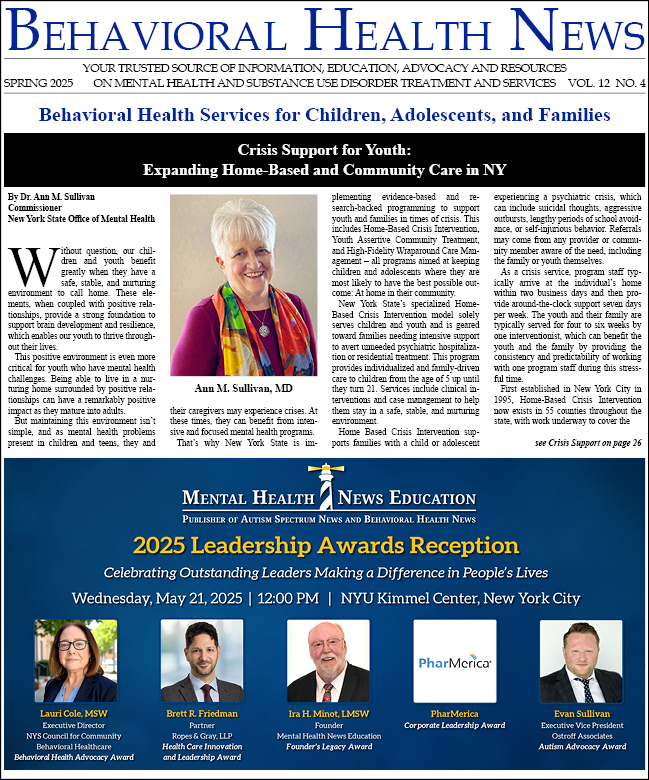-
“The Son Belongs to His Mother”: South Asian Daughters-in-Law and the Mental Health Toll of Family Hierarchy
In many South Asian families, a daughter-in-law doesn’t simply marry a husband—she marries into a hierarchy. Her entry into the household often marks a shift in family dynamics, especially where a deep, enmeshed mother-son bond is already in place. What may appear on the surface as generational...
-
NAMI-NYC Board of Directors Announces New CEO Maggie G. Mortali, MPH
NAMI-NYC's Board of Directors is proud to announce that Maggie G. Mortali, MPH, has been appointed as the organization’s next Chief Executive Officer. A nationally recognized leader in public health and mental health advocacy, Maggie brings more than a decade of experience in suicide prevention,...
-
Addressing Child and Youth Loneliness: Family-Based Interventions to Improve Mental Health
*This is a composite case example. The names have been changed to protect the identities of the clients. Loneliness is not simply a feeling but a social determinant of one’s overall health. Loneliness is a state of emotional distress that develops when one experiences a disconnect between...
-
The Impact of Leisure Activities on Mental Well-Being in Children and Adolescents with Prader-Willi Syndrome and Trauma
Prader-Willi Syndrome (PWS) is a rare, complex genetic syndrome estimated to impact one in 10,000 to 30,000 individuals worldwide (National Library of Medicine [NLM], 2020). PWS is generated by a genetic mutation on Chromosome 15, causing a wide range of cognitive and physical disabilities (NLM,...
-
Understanding the Link Between Trauma and Substance Use in Adolescents
Adolescence is a critical period of development, and exposure to trauma during this stage can impact mental health and behavior. Research consistently shows a strong connection between trauma and substance use among adolescents, with trauma often acting as a risk factor for developing substance use...
-
Young Adult Access Centers: A Massachusetts Model for Supporting Young Adults with Behavioral Health Challenges
The Massachusetts Department of Mental Health (DMH) Young Adult Access Centers are unique community spaces that serve young adults with mental health and co-occurring behavioral health concerns and support them with their transition to adulthood. These 10 Access Centers are tailored to young people...
-
Creating a Continuum of Care: Addressing Mental Health Challenges Facing Youth & Young Adults in New York and Beyond
The mental health landscape for youth and young adults in the United States is at a critical inflection point. According to the World Economic Forum, the world’s 1.2 billion young people, representing 16% of the global population, are facing a generational mental health crisis of unprecedented...
-
Stretching Medicaid Dollars: How Behavioral Health Providers Can Stay Afloat
Many behavioral health providers around the country are trying to establish and implement alternative payment models in hopes of focusing on reducing costs and improving outcomes, especially for more acute patients. However, many states and health plans lag, creating a disincentive for already...
-
Breaking the Cycle: How Cultural Competence in Behavioral Health Can Improve Early Intervention for Black and Brown Youth
Cultural competence in behavioral health refers to the ability of health care providers to understand, communicate with, and effectively interact with individuals across cultures. It includes being aware of the cultural factors that influence an individual's experiences and worldview, including...
-
Parenting with Mental Illness: Breaking the Silence and Navigating the Challenges
Mental illness affects millions of individuals worldwide, with an estimated 20% of adults in the United States experiencing a mental health disorder each year (NIMH, 2022). Among them, many are parents tasked with the responsibility of raising children while managing their own mental health. While...





